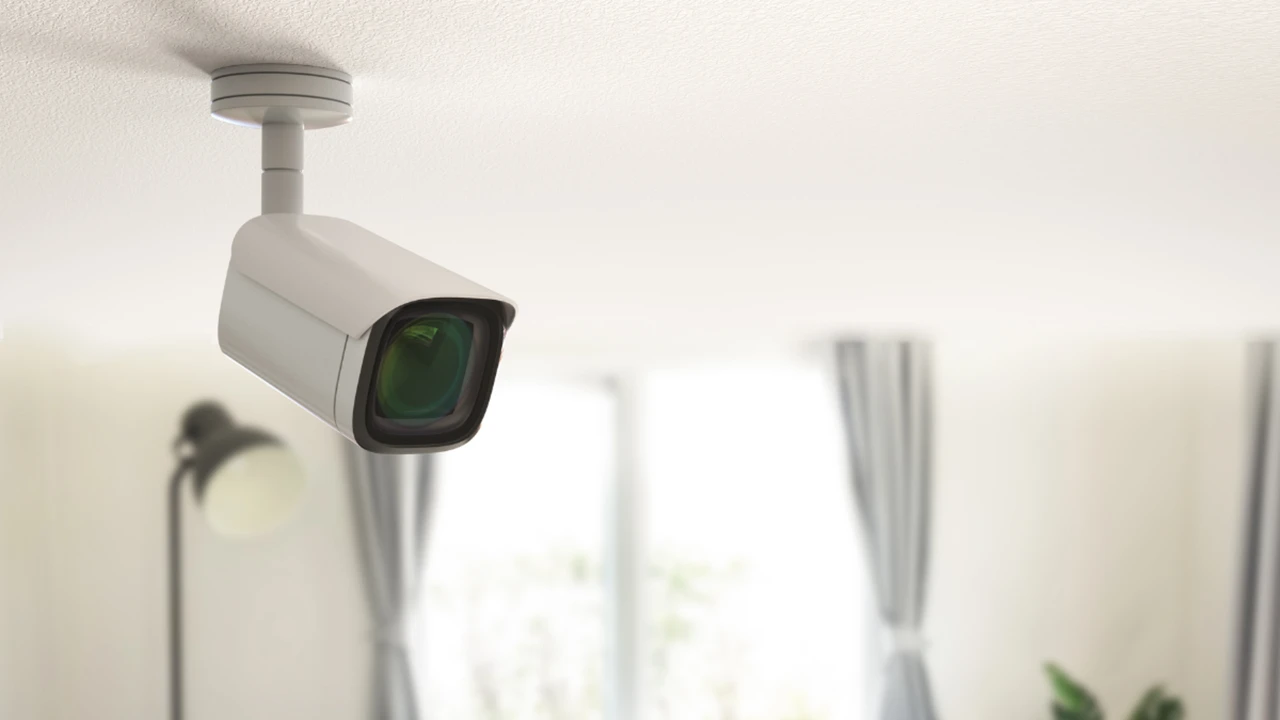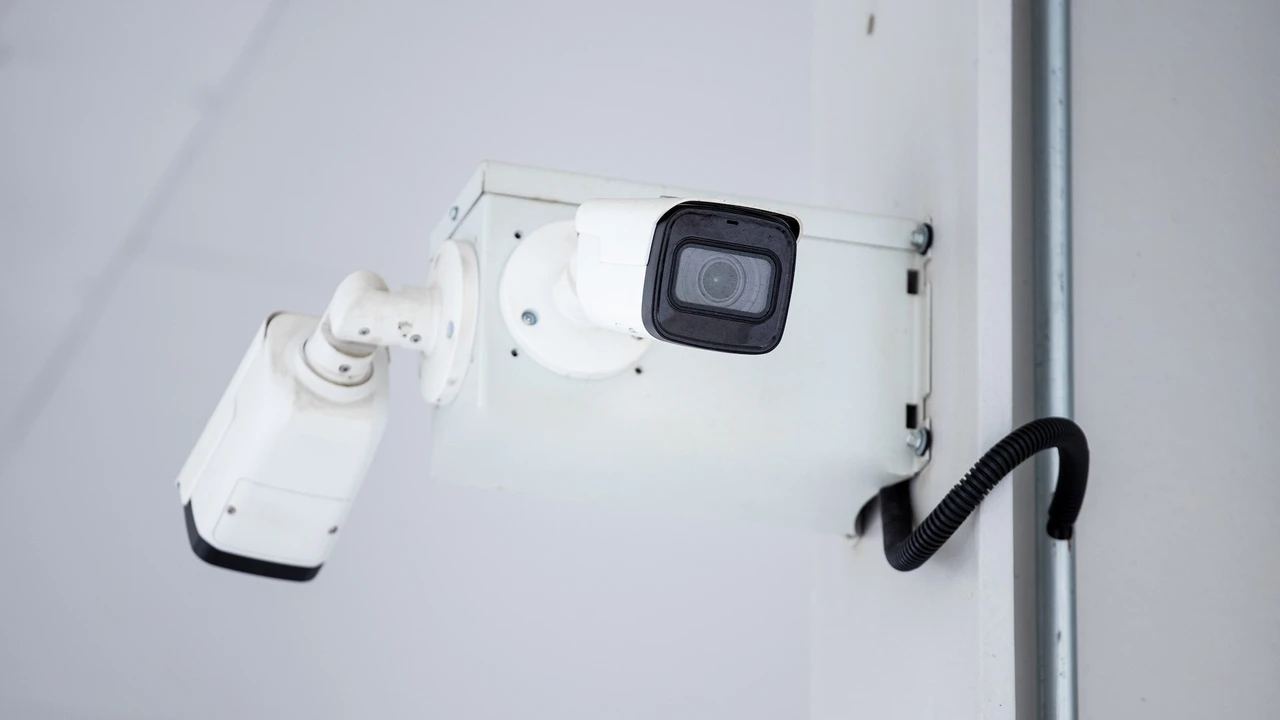3 Essential Sensors for a Robust Home Alarm System
Explore the three most important sensors that form the backbone of a robust and effective home alarm system.

3 Essential Sensors for a Robust Home Alarm System
When it comes to safeguarding your home and loved ones, a reliable alarm system is non-negotiable. But what truly makes an alarm system robust and effective? It all boils down to the sensors – the unsung heroes that detect threats and trigger alerts. While there's a vast array of sensors available, three types stand out as absolutely essential for any comprehensive home security setup: door and window sensors, motion sensors, and glass break sensors. Let's dive deep into why these three are crucial, how they work, what to look for when buying them, and some top product recommendations.
Door and Window Sensors The First Line of Defense
Think of your doors and windows as the primary entry points for intruders. It makes perfect sense then that securing these vulnerable spots is your first priority. Door and window sensors, also known as entry sensors, are designed to do just that. They are typically two-piece devices: one piece attaches to the door or window frame, and the other attaches to the door or window itself. When the door or window opens, the two pieces separate, breaking a magnetic contact and triggering the alarm.
How Door and Window Sensors Work for Home Security
Most modern door and window sensors use a simple yet effective magnetic reed switch. When the door or window is closed, the magnet on one piece holds the reed switch on the other piece in a closed position, completing a circuit. When the door or window opens, the magnet moves away, the reed switch opens, and the circuit is broken. This change in circuit status is immediately communicated wirelessly (or sometimes wired) to your main alarm panel, which then initiates the alarm sequence – siren, notifications to your phone, and potentially a call to a monitoring center.
Key Features to Look for in Entry Sensors
- Wireless Connectivity: Most modern systems are wireless, making installation much easier and cleaner. Ensure compatibility with your existing or chosen alarm system's wireless protocol (e.g., Z-Wave, Zigbee, proprietary RF).
- Battery Life: Long battery life is crucial. You don't want to be constantly changing batteries. Look for sensors with a battery life of 2-5 years.
- Compact Design: Smaller, less obtrusive sensors blend better with your home decor.
- Tamper Protection: Some sensors include tamper switches that trigger an alarm if someone tries to remove or disable the sensor itself.
- Easy Installation: Look for sensors that come with adhesive backing or simple screw mounts.
- Environmental Resistance: If you're placing sensors on exterior doors or windows, ensure they can withstand varying temperatures and humidity.
Recommended Door and Window Sensors and Their Use Cases
1. Ring Alarm Contact Sensor (2nd Gen)
Description: A compact, easy-to-install sensor that integrates seamlessly with the Ring Alarm ecosystem. It's known for its reliability and straightforward setup.
Use Case: Ideal for Ring Alarm users looking to secure all entry points. Perfect for front doors, back doors, ground-floor windows, and even cabinet doors for child safety.
Price: Approximately $20-$25 per sensor.
Comparison: Very user-friendly, good battery life, and integrates well with other Ring devices like cameras and doorbells. It's a solid choice for a DIY-friendly system.
2. SimpliSafe Entry Sensor
Description: SimpliSafe's entry sensors are small, discreet, and designed for quick installation. They are a core component of the SimpliSafe wireless security system.
Use Case: Best for SimpliSafe system owners. Excellent for securing all standard doors and windows, including those in apartments or smaller homes where discreet sensors are preferred.
Price: Approximately $15-$20 per sensor.
Comparison: Similar to Ring in ease of use and integration within its own ecosystem. SimpliSafe often offers more flexible monitoring plans, which can be a deciding factor for some users.
3. Aeotec Door/Window Sensor 7 (Z-Wave Plus)
Description: A highly versatile Z-Wave Plus compatible sensor that can be integrated into a wide range of smart home hubs (e.g., SmartThings, Hubitat, Home Assistant).
Use Case: Perfect for users with an existing Z-Wave smart home hub who want to add security functionality. Can be used on any door or window, and its open-platform nature allows for advanced automation rules.
Price: Approximately $30-$40 per sensor.
Comparison: More expensive but offers greater flexibility and compatibility with various smart home platforms. Requires a Z-Wave hub, which adds to the initial cost but provides a more integrated smart home experience beyond just security.
Motion Sensors Catching Intruders in the Act
While entry sensors guard your perimeter, motion sensors act as your interior watchdogs. They detect movement within a designated area, providing a crucial layer of defense in case an intruder bypasses your door and window sensors, or enters through an unsecured opening like a broken window. Motion sensors are typically placed in high-traffic areas, hallways, or rooms with valuable items.
How Motion Sensors Work for Home Security
Most home security motion sensors use Passive Infrared (PIR) technology. They detect changes in infrared energy (heat) within their field of view. When a warm body, like a person, moves into the sensor's detection zone, it registers a change in IR levels and triggers the alarm. More advanced motion sensors might combine PIR with microwave technology (dual-tech sensors) to reduce false alarms, as both technologies need to be triggered simultaneously.
Key Features to Look for in Motion Sensors
- Pet Immunity: This is a big one for pet owners! Pet-immune sensors are designed to ignore animals below a certain weight or size, preventing false alarms from your furry friends. Look for adjustable pet immunity settings.
- Detection Range and Angle: Ensure the sensor covers the area you intend to protect. Typical ranges are 20-40 feet with a 90-110 degree angle.
- Wireless Connectivity: Again, wireless is preferred for ease of installation.
- Battery Life: Similar to entry sensors, aim for long battery life.
- Tamper Protection: A good feature to prevent an intruder from disabling the sensor.
- Adjustable Sensitivity: Allows you to fine-tune the sensor to your environment, further reducing false alarms.
Recommended Motion Sensors and Their Use Cases
1. Ring Alarm Motion Detector (2nd Gen)
Description: A reliable PIR motion detector that integrates seamlessly with the Ring Alarm system. It offers pet immunity settings to minimize false alarms.
Use Case: Ideal for Ring Alarm users to cover large rooms, hallways, or stairwells. Its pet immunity makes it suitable for homes with small to medium-sized pets.
Price: Approximately $25-$30 per sensor.
Comparison: Easy to set up and manage within the Ring app. Good detection range and reliable performance within the Ring ecosystem. Pet immunity is a significant plus.
2. SimpliSafe Motion Sensor
Description: SimpliSafe's motion sensor is designed to be discreet and effective, providing wide-angle coverage and pet immunity.
Use Case: A must-have for any SimpliSafe system. Place it in central areas, near entry points, or in rooms with valuables. Its pet immunity is effective for pets up to 50 pounds.
Price: Approximately $25-$30 per sensor.
Comparison: Similar to Ring in functionality and ease of integration within its own system. SimpliSafe's sensors are generally well-regarded for their reliability and robust build quality.
3. Bosch ISC-PPR1-WA16 Professional Series PIR Motion Detector
Description: A professional-grade PIR motion detector known for its exceptional false alarm immunity and robust detection capabilities. While often wired, wireless versions are available for professional systems.
Use Case: Best for larger homes or commercial properties where maximum reliability and false alarm prevention are critical. Often integrated into professionally installed systems like ADT or Vivint, but can be used with compatible DIY panels that support wired sensors.
Price: Approximately $40-$60 per sensor (wired version, wireless can be higher).
Comparison: Significantly more robust and reliable than consumer-grade sensors, with advanced signal processing to distinguish between humans and other sources of heat. Requires more complex installation (often wired) but offers superior performance and peace of mind.
Glass Break Sensors The Sound of Security
Imagine an intruder smashing a window to gain entry, completely bypassing your door and window sensors. This is where glass break sensors come into play. These specialized sensors listen for the specific frequencies of breaking glass, providing an immediate alert even if the window itself isn't opened.
How Glass Break Sensors Work for Home Security
Glass break sensors typically use acoustic technology. They contain a microphone and a microprocessor that analyzes sound patterns. They are specifically tuned to recognize two distinct sounds associated with breaking glass: the initial 'thud' of an object hitting the glass, followed by the 'shatter' of the glass breaking. By requiring both sounds to be detected in quick succession, these sensors significantly reduce false alarms from other loud noises.
Key Features to Look for in Glass Break Sensors
- Dual-Stage Detection: As mentioned, this is crucial for false alarm prevention.
- Adjustable Sensitivity: Allows you to fine-tune the sensor's listening range to avoid picking up sounds from outside your property or from other rooms.
- Coverage Area: Check the sensor's specified range and angle. A single sensor can often cover multiple windows in a room.
- Wireless Connectivity: For easy installation and integration.
- Battery Life: Standard long battery life is expected.
- Mounting Options: Can be mounted on walls or ceilings, depending on the room layout.
Recommended Glass Break Sensors and Their Use Cases
1. Ring Alarm Glass Break Sensor
Description: An acoustic glass break sensor designed to integrate seamlessly with the Ring Alarm system. It listens for the specific sounds of breaking glass within a 25-foot radius.
Use Case: Excellent for rooms with multiple windows, such as living rooms, dining rooms, or bedrooms. One sensor can often protect several windows, making it cost-effective for Ring Alarm users.
Price: Approximately $35-$40 per sensor.
Comparison: Easy to set up and manage through the Ring app. Reliable detection within its specified range. A great addition to a Ring system for comprehensive perimeter protection.
2. SimpliSafe Glassbreak Sensor
Description: SimpliSafe's glass break sensor uses advanced acoustic technology to detect the unique sound signature of breaking glass. It has a wide coverage area.
Use Case: Ideal for SimpliSafe users who want to protect rooms with large windows, sliding glass doors, or multiple windows. It provides an extra layer of security against forced entry.
Price: Approximately $35-$40 per sensor.
Comparison: Similar to Ring in functionality and price point. Both offer reliable acoustic detection. SimpliSafe's sensor is known for its robust build and consistent performance within its ecosystem.
3. Honeywell Home 5853 Wireless Glass Break Detector
Description: A professional-grade wireless glass break detector compatible with Honeywell and 2GIG security systems. It offers superior false alarm immunity and a wide detection range.
Use Case: Best for users with Honeywell or 2GIG alarm panels, or those looking for a more robust, professional-grade solution. Suitable for larger rooms or areas with high-value assets where false alarms are absolutely unacceptable.
Price: Approximately $60-$80 per sensor.
Comparison: More expensive but offers enhanced reliability and false alarm prevention due to its advanced acoustic processing. Often used in professionally installed systems, but can be integrated into compatible DIY systems for those seeking top-tier performance.
Putting It All Together Building Your Robust Home Alarm System
Now that we've explored the three essential sensor types, let's talk about how they work in harmony to create a truly robust home alarm system. It's not about choosing one over the other; it's about strategic placement and layering your defenses.
Strategic Placement for Maximum Security Coverage
- Entry Sensors: Place these on ALL accessible doors and windows on the ground floor. Don't forget basement windows, garage doors, and any upper-story windows that are easily accessible (e.g., near a low roof or deck).
- Motion Sensors: Position motion sensors in central hallways, at the top of staircases, and in rooms that an intruder would likely pass through after gaining entry. Avoid placing them directly facing windows or heat sources (like vents or radiators) to minimize false alarms. For pet owners, ensure they are mounted at a height that allows for pet immunity.
- Glass Break Sensors: Install these in rooms with multiple windows or large glass panes (e.g., sliding glass doors, picture windows). One sensor can often cover an entire room, so you don't necessarily need one for every single window. Place them on a wall or ceiling within the recommended listening range of the glass.
The Layered Defense Approach
A robust home alarm system employs a layered defense strategy:
- Perimeter Defense (Entry Sensors): These are your first line of defense, designed to detect an intruder before they even fully enter your home.
- Interior Defense (Motion Sensors): If the perimeter is breached, motion sensors catch the intruder moving inside your home.
- Vulnerability-Specific Defense (Glass Break Sensors): These target a specific method of entry (smashing glass) that might bypass other perimeter sensors.
By combining these three essential sensor types, you create a comprehensive security net that significantly increases your home's protection. An intruder would have to be incredibly stealthy and lucky to bypass all three layers without triggering an alarm.
Beyond the Essentials Enhancing Your System
While door/window, motion, and glass break sensors are the backbone, there are other sensors that can further enhance your home alarm system, turning it into a truly smart and comprehensive safety solution.
Environmental Sensors for Comprehensive Safety
- Smoke and Carbon Monoxide Detectors: These are critical for life safety. Many modern alarm systems integrate these sensors, allowing for centralized monitoring and alerts.
- Flood/Water Leak Sensors: Placed near water heaters, washing machines, or in basements, these can alert you to leaks before they cause significant damage.
- Temperature Sensors: Can monitor for extreme temperature drops (e.g., to prevent pipes from freezing) or rises.
Advanced Security Sensors
- Shock Sensors: Detect vibrations caused by forced entry attempts, even before a door or window is fully opened or glass is broken.
- Image Sensors: Motion sensors with built-in cameras that capture a series of still images when motion is detected, providing visual verification of an event.
- Panic Buttons: Allow for immediate manual triggering of the alarm in an emergency.
DIY vs Professional Installation and Monitoring
When choosing your sensors and system, you'll also need to consider whether you're going the DIY route or opting for professional installation and monitoring.
DIY Systems and Sensors
Systems like Ring Alarm and SimpliSafe are designed for easy DIY installation. Their sensors are typically wireless and come with adhesive backing, making setup a breeze. You can often choose between self-monitoring (receiving alerts on your phone) or subscribing to professional monitoring for a monthly fee. This option is generally more affordable upfront and offers flexibility.
Professionally Installed Systems and Sensors
Companies like ADT, Vivint, and Brinks offer professionally installed systems. While these often come with higher upfront costs and longer contracts, they provide expert installation, 24/7 professional monitoring, and often more robust, commercial-grade equipment. Their sensors might include wired options for enhanced reliability and tamper resistance.
Final Thoughts on Building Your Secure Home
Building a robust home alarm system doesn't have to be overly complicated or expensive. By focusing on the three essential sensor types – door and window sensors, motion sensors, and glass break sensors – and strategically placing them, you create a powerful defense against intruders. Remember to consider your specific needs, home layout, and budget when selecting products. Whether you go with a DIY system or a professionally installed one, the goal is the same: peace of mind knowing your home and family are protected. Stay safe out there!
:max_bytes(150000):strip_icc()/277019-baked-pork-chops-with-cream-of-mushroom-soup-DDMFS-beauty-4x3-BG-7505-5762b731cf30447d9cbbbbbf387beafa.jpg)






